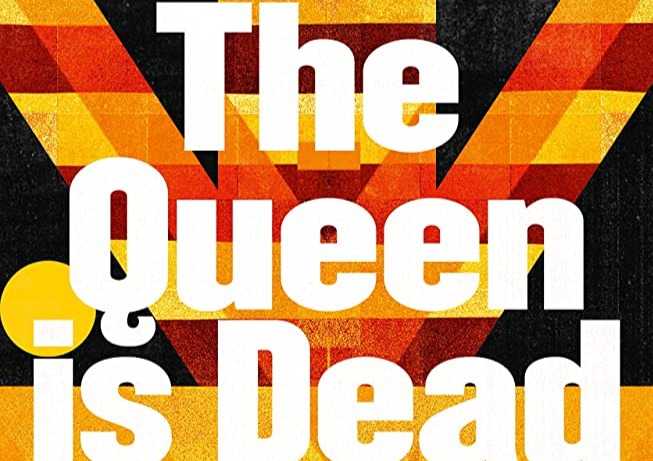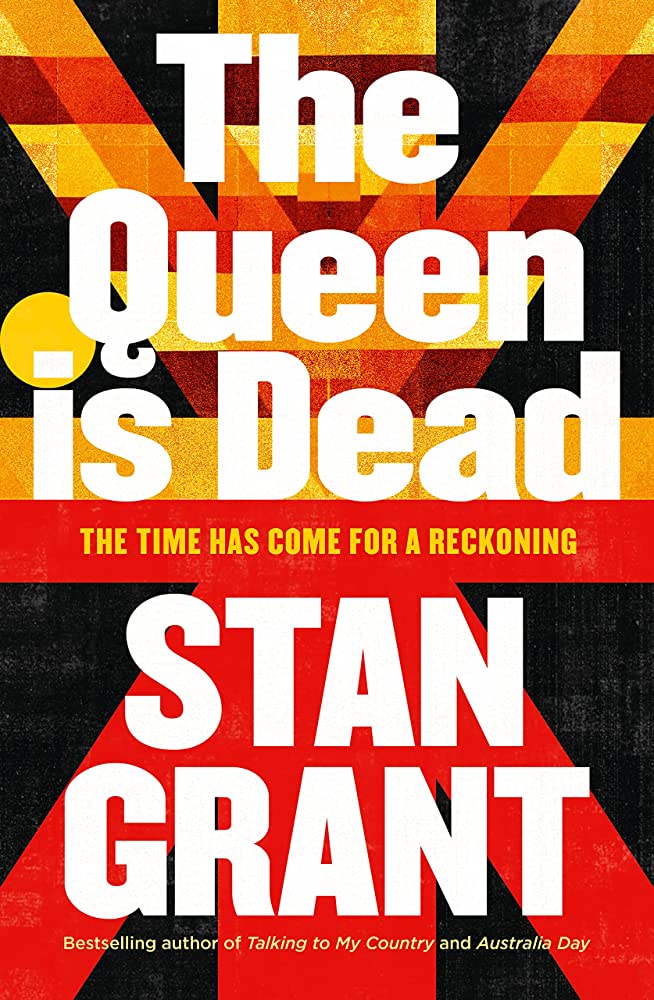
- Free Article: No
- Contents Category: Society
- Review Article: Yes
- Article Title: 'Damn the White Queen'
- Article Subtitle: Stan Grant’s passionate new book
- Online Only: No
- Custom Highlight Text:
As I write this review, Stan Grant’s name is everywhere as the media and the public absorb his decision to step aside from compèring ABC Television’s Q&A after citing the cumulative wear and tear on him and his family of weeks of online racist abuse. Yet such is the pace of the twenty-four-hour news cycle that by the time this review appears, another episode in the seemingly never-ending racist diatribe against Australian First Nations peoples will have moved Grant off the front pages. The ‘trolls of the Twitter sewer’, as Grant calls them, will have found another target for their hatred and aggression.
- Featured Image (400px * 250px):

- Alt Tag (Featured Image): Malcolm Allbrook reviews 'The Queen Is Dead: The time has come for a reckoning' by Stan Grant
- Book 1 Title: The Queen is Dead
- Book 1 Subtitle: The time has come for a reckoning
- Book 1 Biblio: Fourth Estate, $34.99 pb, 288 pp
- Book 1 Cover Small (400 x 600):

- Book 1 Cover (800 x 1200):

Gutter racism has served as a convenient diversion in the history of the modern Australian nation, consistently allowing policy makers and opinion leaders to deal only with the worst excesses of racist behaviour. To Grant, the greater problems are the institutional barriers that reserve real power in Australian society for an overwhelmingly white and mostly male élite. It is the notion of ‘whiteness’ that preoccupies Grant in The Queen Is Dead. Careful to define it as ‘an organising principle’ more than an identifier of skin colour or ethnicity, he cites Theodore Allen’s two-volume The Invention of the White Race (2012) to portray whiteness as a social but more importantly a power construct. Allen contended that it emerged in the context of the plantation culture of seventeenth-century America as a way of justifying and entrenching the system of African slavery as the basis of the system of production.
As an idea, whiteness has proved incredibly effective. Moreover, it has been remarkably versatile in that it is just as much at home in, say, seventeenth-century Virginia or colonial Kenya as it in colonial and post-Federation Australia. It has never been solely about race, although notions of white supremacy are its logical extension. It is effective in just about any setting where competition exists over resources, and has proved a potent weapon in countless settings, including when the opposing parties are both white: the British suppression of Irish self-determination in the eighteenth and nineteenth centuries, for instance; the so-called Boer Wars of the late nineteenth and early twentieth centuries; or, for that matter, Russia’s current determination to destroy Ukraine. At its most basic level, it functions in a similar way to the style of Orientalism conceived by Edward Said in his famous 1978 text, in that it acts to objectify and dehumanise, to set up oppositional conceptions of self/other, Orient/Occident. Whiteness opens the space for imperial control, for dehumanising, for creating an ‘other’, for one group to dominate another, and it has operated with particular virulence in a colonial situation such as Australia.
Grant reminds us that the system of whiteness continues unabated and is not merely a colonial construct swept away by the values of modernity. ‘Damn Australia,’ he writes, ‘Damn it to hell for what it did to my family, what it did to countless Black families.’
Black families with White blood more often than not, but families who could never be white. Damn the White Queen too … Her crown is the Crown that stole this country – it is the Crown that smashed Black lives. These things were done in her name. Let’s not forget, too, that in her time, during her reign, her crimes against us continued.
Passages such as this are bound to infuriate Australians who support the monarchy, and there are many of them. Despite the healthy number of Australians who believe we should have an Australian as head of state, the monarchists seem to control the airwaves. Their expectations, or rather assumptions, were that Australians would spend the National Day of Mourning in reverence and contemplation for the reign of the only monarch most Australians had ever known, and the coronation glued to the wall-to-wall telecast of a ceremony the meaning and origins of which seem relics of a past era, and a foreign one at that.
Grant does not disrespect the sadness of those who mourn the late queen; indeed, he respects her ‘as a human being; burdened, flawed, loving and loved, like us all’. It is the idea of the White Queen he does not mourn; to mourn it would be to ‘betray the memories of my forebears’. As a public figure and a prominent First Nations person, Grant is apparently disqualified from expressing his opinions, nuanced and considered though they are. Apparently, he would have been better off remaining silent as most of the people I know did. For many people, the passing of Elizabeth II and the ascension of Charles III meant little, not so much because of a sense of apathy but because of indifference. The sharpness of the criticism of those of those who speak out – and Grant is only the most recent in a growing line – is apparently acceptable in modern Australia. And a particular vehemence seems to be reserved for First Nations people who call out racism. True freedom of speech, it seems, is a privilege that rests with the few; they complain when their views are questioned, but woe betide those who exercise their freedoms to air opinions, no matter how mildly they might be expressed, that depart from the orthodox.
It is something of an understatement to say that this book will not appeal to everyone. Indeed, as literature, it can be hard going. Grant is a journalist, and he writes like one, but with his own style. He positions himself as an observer and interpreter, and thus the book is intensely personal. At heart, he remains the sensitive Wiradjuri boy whose family was afflicted by the pitiless policies of the Stolen Generation, and thus grew up in their shadow. His prose can be difficult: staccato and incomplete sentences; endless repetition of key themes and terminology; features that feel like sermons or read like collections of speeches. Such are the passions that Grant seems to ignite that some will simply refuse to read the book, and others will miss the subtleties of his argument and take his narrative on whiteness as an affront or as an attempt to inflict white guilt. Yet it demands attention. Its messages are pertinent to many eras and themes in Australian history, perhaps particularly as public debate over a First Nations Voice to Parliament grows increasingly ugly and pugnacious. Grant’s is only one First Nations voice, but his is particularly compelling and lucid. In a country where many seem unable to acknowledge the continuing consequences of colonisation for First Nations peoples, this is a book that will challenge, its messages are to be absorbed and reflected upon.


Comments powered by CComment